Are you Poisoning your Cat with essential oils? – Part 2
28.02.2018
I’m sure you enjoyed part 1 of this bulletin, where you learned all the science and do’s and don’t’s when it comes to essential oils and cats.
I’ve got some great tips for you about how you would use Young Living essential oils safely on your feline friends.
Now let’s take a closer look at how you would use the Young Living oils and products on your cat….
1. Cleaning your cat, cleaning your home
 Because cats are so sensitive to chemicals, you could very well be poisoning your cat through the use of toxic chemicals found in your home cleaning products – things such as bleach, alcohol, and sodium lauryl sulfate.
Because cats are so sensitive to chemicals, you could very well be poisoning your cat through the use of toxic chemicals found in your home cleaning products – things such as bleach, alcohol, and sodium lauryl sulfate.
That’s why your #1 thing to do is to switch to a non-toxic, all natural cleaning solution for your home and it’s surfaces, including your cat’s bedding. I use Young Living’s Thieves Household Cleaner for this purpose.
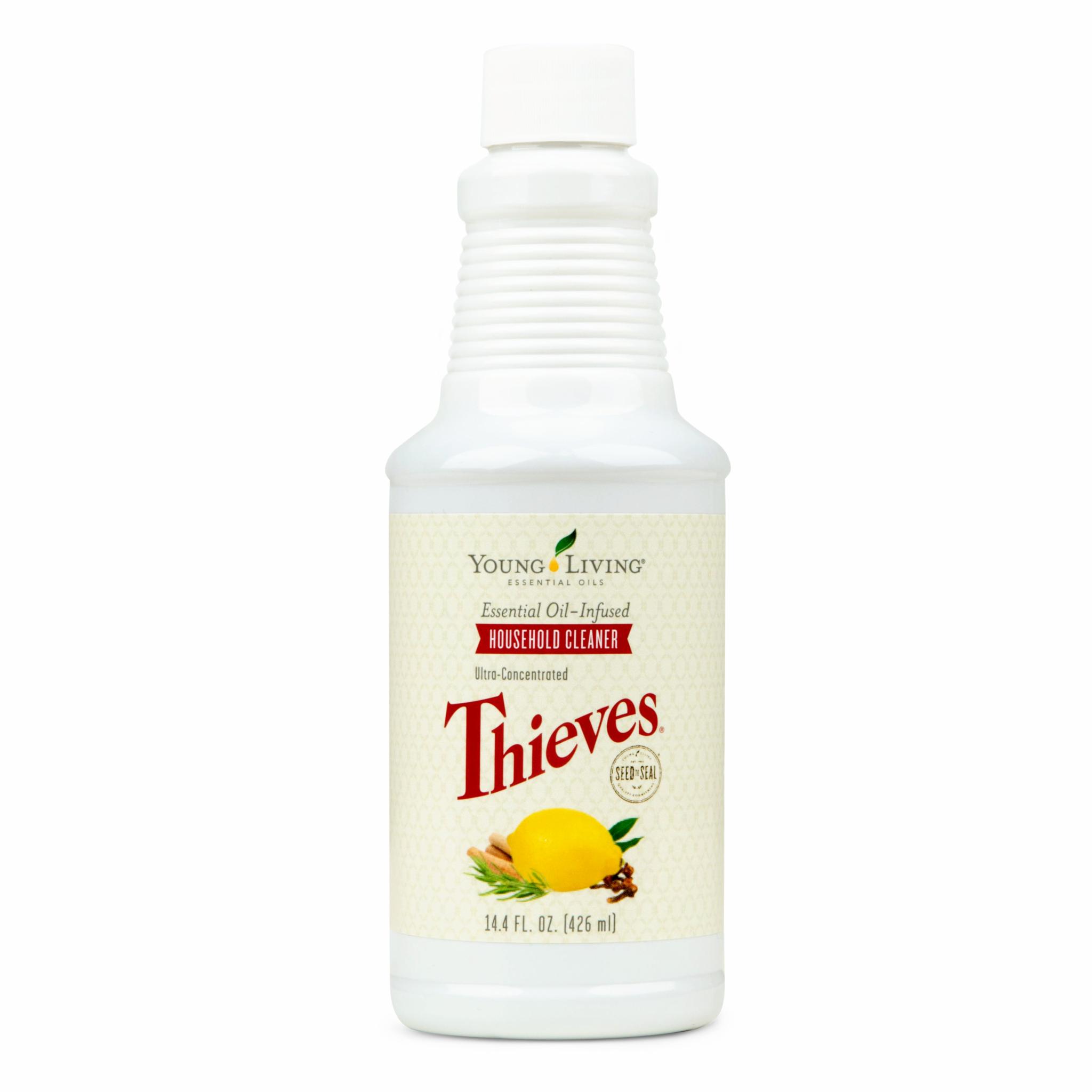
In a 500ml spray bottle, add 1 tablespoon of Thieves Household Cleaner, and top it up with water. You can even add your own signature fragrance to this all-natural, biodegradable cleaning solution.
I love adding 6 drops each of Lemon Myrtle, Lavender and Orange oil, or 6 drops each of Purification, Lavender and Peppermint.
Then simply use this spray on all surfaces – benchtops, floors, oven, vanity and toilet.
And how about washing your cat….
I confess I’ve not needed to do this, as they have this natural self-cleaning mechanism called a tongue!
But if it was needed for any reason, Young Living sell a beautiful AnimalScents Shampoo which is specially formulated to be safe for your pets, including cats.
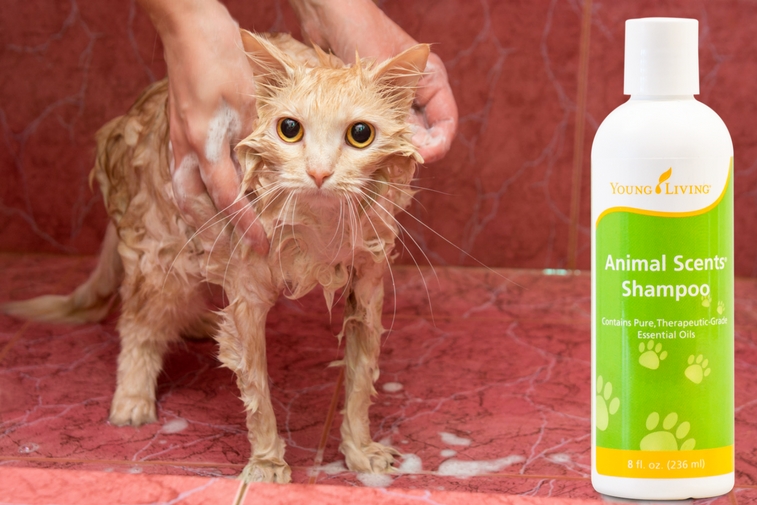
2. “Litteroma” – the best smelling kitty litter!
In nature, your cat would use leaves and pine needles as their kitty litter, so they’d be getting exposed to small amounts of essential oil through contact with this vegetation. With “Litteroma”, we mimic what happens in the wild, by exposing kitty to small quantities of essential oils in their litter tray.
Start with unscented kitty litter, preferably the same brand you are already using. In Australia, I love using “Breeder’s Choice” which is recycled paper.
Sprinkle a small amount of this litteroma mix into one of the kitty litter trays, and mix well. Have a second
litter tray available to your cat (minus the oils), so your cat can choose.
Try using earthy-smelling oils, such as Pine, Copaiba, Vetiver, Idaho Balsam Fir or Northern Lights Black Spruce. Alternatively, you can use oil blends that are great at dispelling odours, such as Purification or Di-Gize, or even Lavender.
3. Diffusing
As with Litteroma, make sure your cat is not trapped in a room where a diffuser is going. They need to be able to move into other rooms if they don’t wish to be near the smell, eg. if it’s too intense for them. My cats will always move out of the bathroom if I have the washing machine or dryer running in there (ie. they don’t like the noise and vibration), yet they are happy to lie there all day while the diffuser is going in the room.
Within a few days of diffusing Transformation oil on a daily basis, they were much more settled in our new home.
I also love to use Purification oil in my diffuser, as it keeps the house smelling fresh even though I have litter trays inside. Yet there are sooooo many oils you can choose from! In fact, the same oils you’d diffuse for people would be the oils that would benefit your cats and/or other pets. So choose what would work for you, and see the effects on your pets.
For example, this might be Lavender or Peace & Calming for calming, RC for ease of breathing, Cedarwood, Sacred Sandalwood or Royal Hawaiian Sandalwood for relaxation, Frankincense or Sacred Frankincense for alertness, or Purification to dispel any animal odor in your home. I have always used 20 to 25 drops of essential oil in my diffuser, as it then penetrates the entire house…but I’d suggest you start with 5 to 10 drops, see how your cat responds, then slowly build up over the coming days until you’ve reached the ideal intensity for both you and your pets.
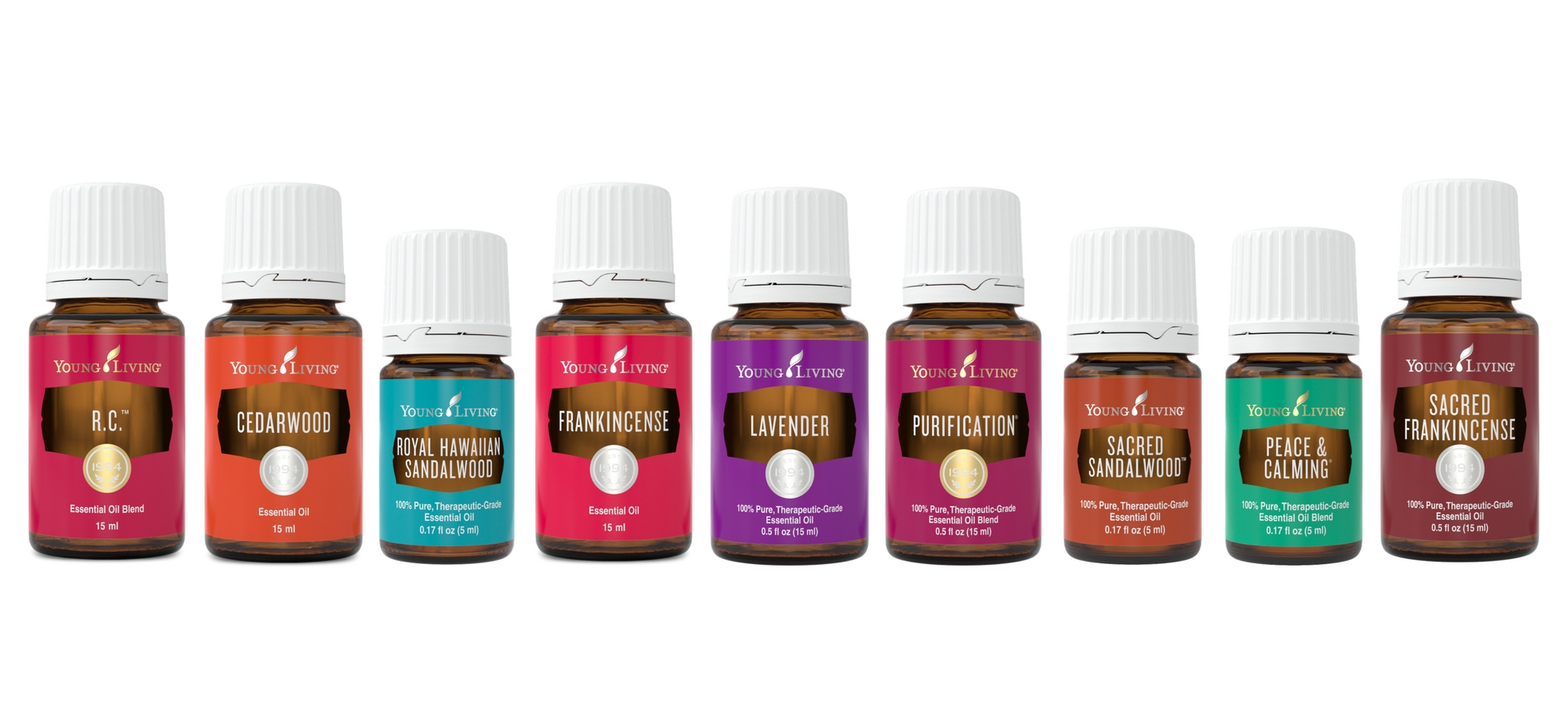
4. Stroking
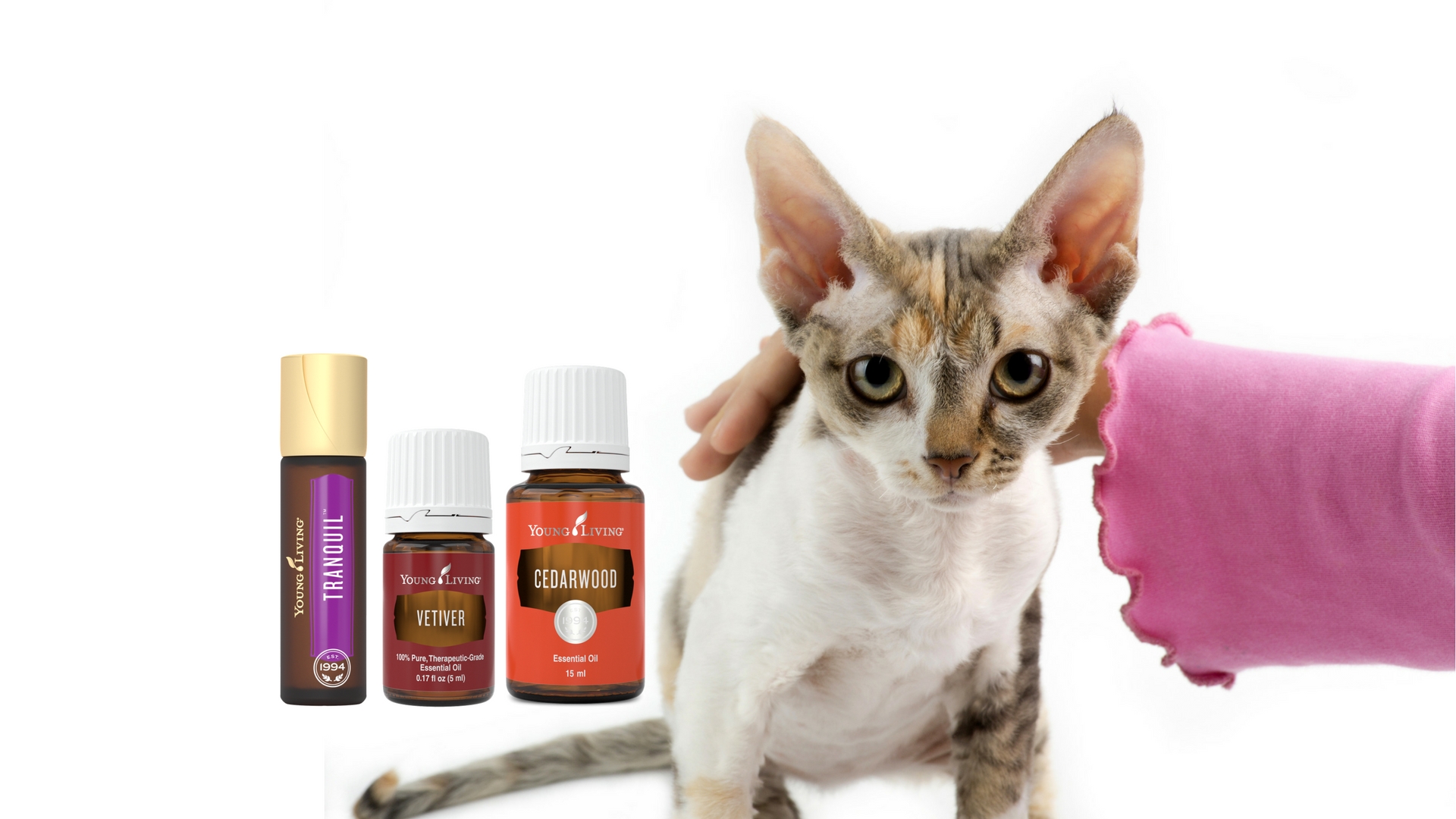
This is a beautiful way of settling a stressed cat. I don’t do it every day, but I do love to do it occasionally with my cats….and to be honest, I so often have oils on my hands and on my body that my cats are getting inadvertently stroked with oils throughout the day. But what I’m suggesting here is a much more conscious application.
Put 1 drop only of essential oil onto one palm, and rub your palms together to disperse the oil. Then simply stroke kitty’s fur with your palms.
I usually hide my hands first, and then reach out and stroke my cat so that the oil is on them before they realise. That’s because most cats don’t like the smell of essential oils because of the intensity, so even if it’s an oil that will benefit them, they may run away with the smell.
One of my favourite oils for this purpose is Spikenard, which sadly is no longer available through Young Living because there are no sustainable sources for Spikenard left anywhere in the world.
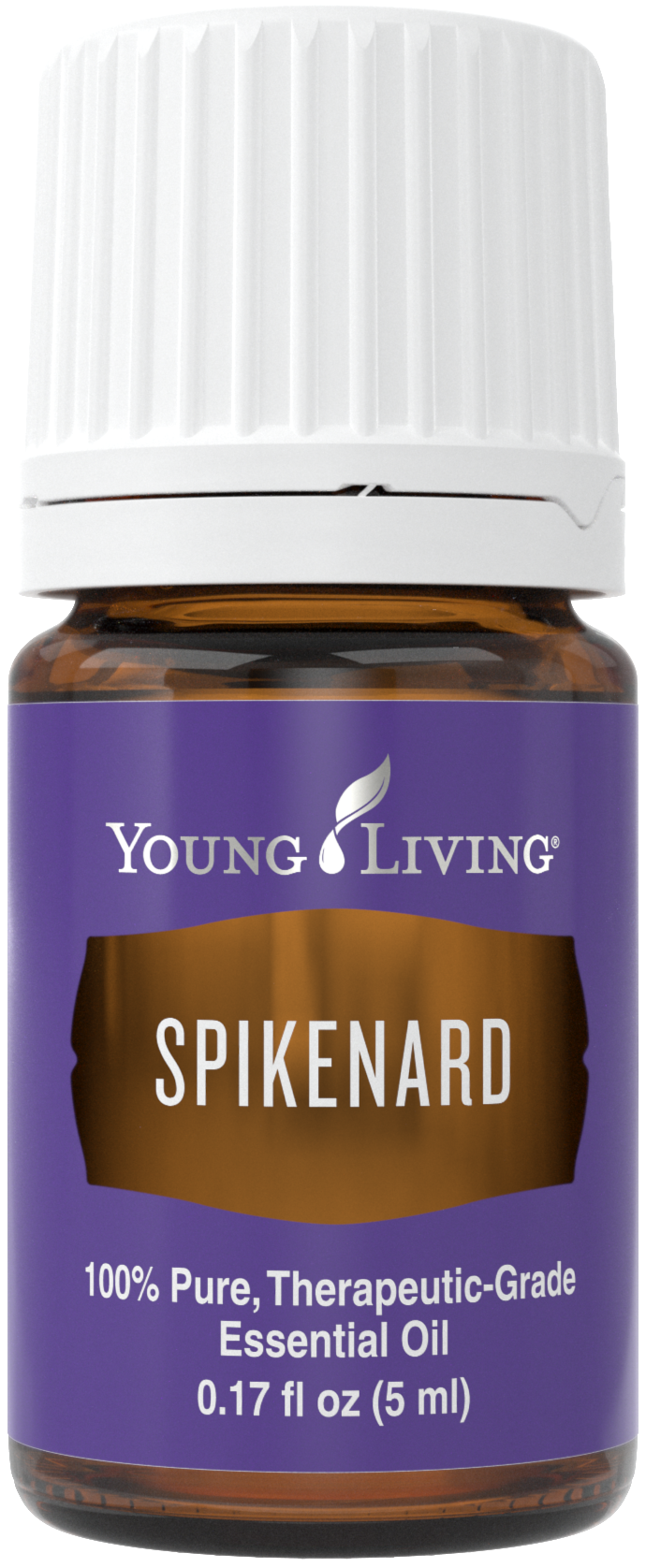 So if you are buying Spikenard from another company, you can be sure it’s either synthetic, or illegally obtained.
So if you are buying Spikenard from another company, you can be sure it’s either synthetic, or illegally obtained.
I hope that one day Spikenard oil will become available again – I always found that one drop, stroked onto the fur, was enough to calm an agitated cat so easily that they’d be settled and asleep within 5 minutes.
The good news is that Spikenard is part of the Valerian family, so nowadays I’d use 1 drop of a calming oil like: Vetiver, Valerian, Ruta Vala, Cedarwood, Sacred Sandalwood, Royal Hawaiian Sandalwood, Tranquil Roll-on or Roman Chamomile.
5. Kitty Raindrop
This is a wonderful way to boost the energy, vibrancy and health of your kitty. Some cats will love it more than others. I’ve had cats purring and begging for more, whilst other cats run away at the smell.
One of my cats (the one mentioned in last week’s bulletin) didn’t particularly like the smell of it, but he nevertheless seemed to recognize that it was good for him. At a time when he needed some extra support, he’d hop onto my desk where the kitty raindrop mix was sitting, and he’d sit right beside it until I’d put it on him, then he’d wander off. He did this like clockwork, every 2 days.
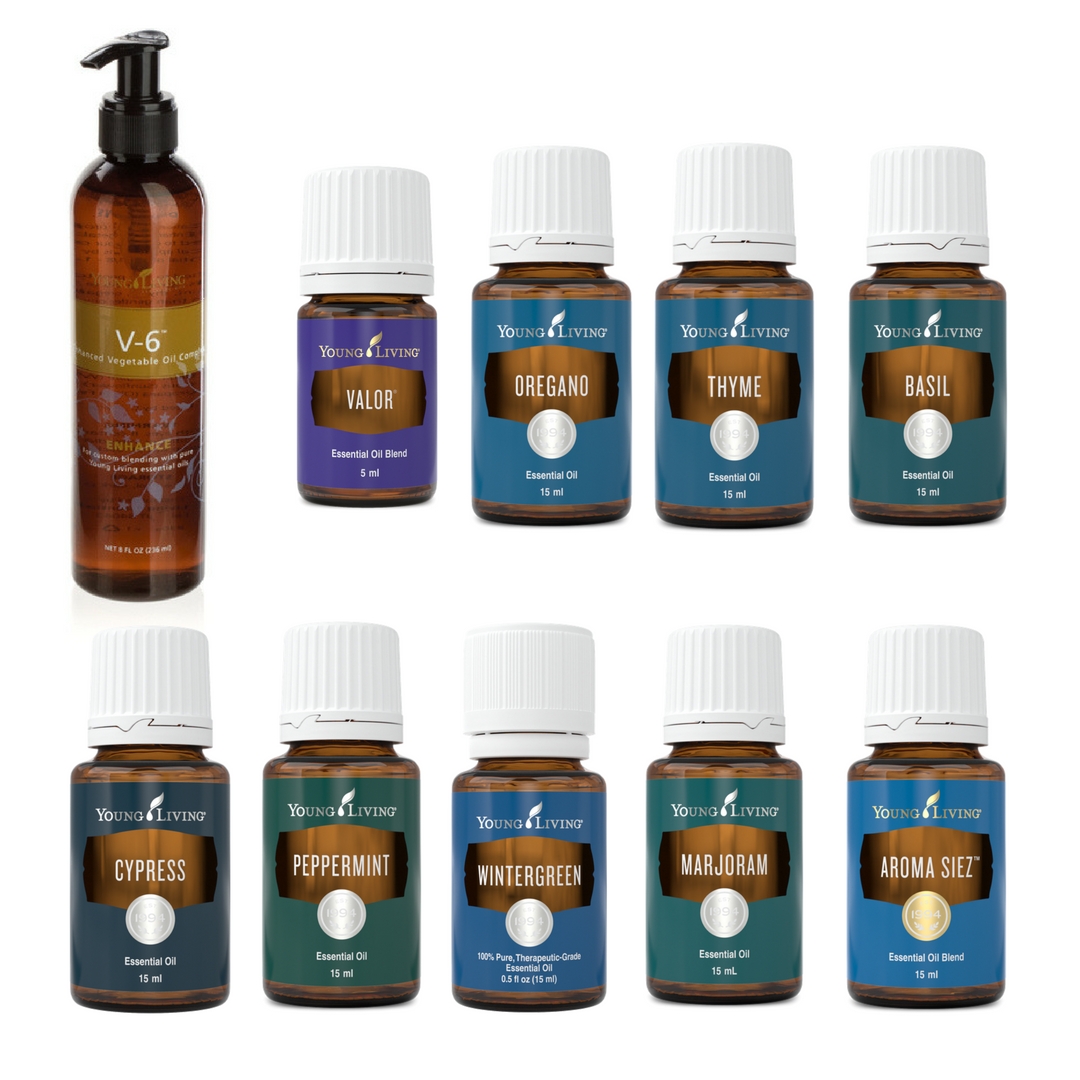
To make the Kitty Raindrop mix, take 1 tablespoon of Young Living’s V6 oil, and add 2 drops each of all the Raindrop Technique oils into it.
I’ve never had problems with the Wintergreen in this mix because it’s so heavily diluted, and know of a cat who received this exact mix every day for 2 years or more with no problems (and his liver was regularly vet tested via blood tests to verify that it was not becoming stressed).
However, you may prefer to err on the side of caution and replace the Wintergreen with something like Frankincense, Sacred Frankincense or Idaho Balsam Fir.
Apply ½ to 1 teaspoon of this mix onto kitty’s spine, massaging from the base of the spine to the top of the neck three times.
Even if cats don’t particularly like the smell, they sure love the back massage!
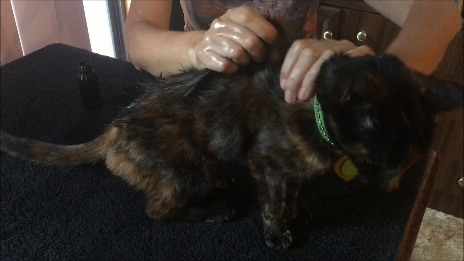
6. Diluted application
Animals are so much like us, so if an oil would work in a particular way on a human, it will also work in that way on an animal. So do your homework online or through a good reference book, and choose the oil that you feel would most benefit your cat. This is the oil you will stroke through their fur (1 drop, as in the stroking method described above), or apply in diluted fashion to them.
When we talk about dilution ratios, the first number is the number of drops of essential oil, the second number is the number of drops of Young Living’s V6 or (other organic) vegetable oil. These are the proportions, and then you can make this proportion up in larger quantities, eg. 1:10 could be 1ml of essential oil to 10ml of V6 oil.
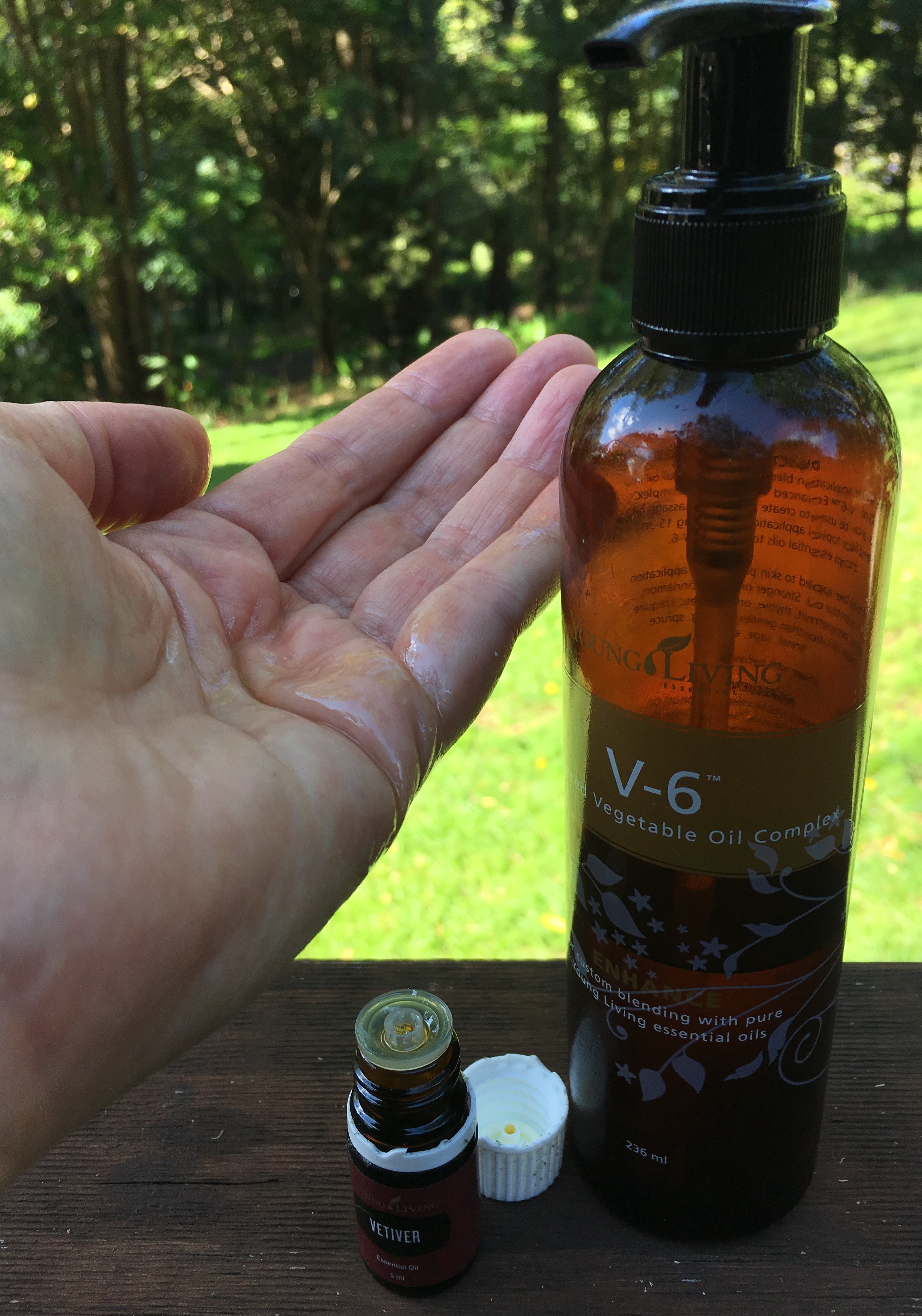 Generally you’d dilute an oil 1:10 for a cat, although you could go as strong as a 1:4 dilution if you are only using a very tiny amount topically (eg. 1 drop of the 1:4 mix).
Generally you’d dilute an oil 1:10 for a cat, although you could go as strong as a 1:4 dilution if you are only using a very tiny amount topically (eg. 1 drop of the 1:4 mix).
As a point of reference, Kitty Raindrop is roughly a 1:17 dilution ratio (because we are using oils with high phenols in them, so we need it very diluted).
If you’re not already receiving our weekly
Raw Divinity bulletin, CLICK HERE to subscribe
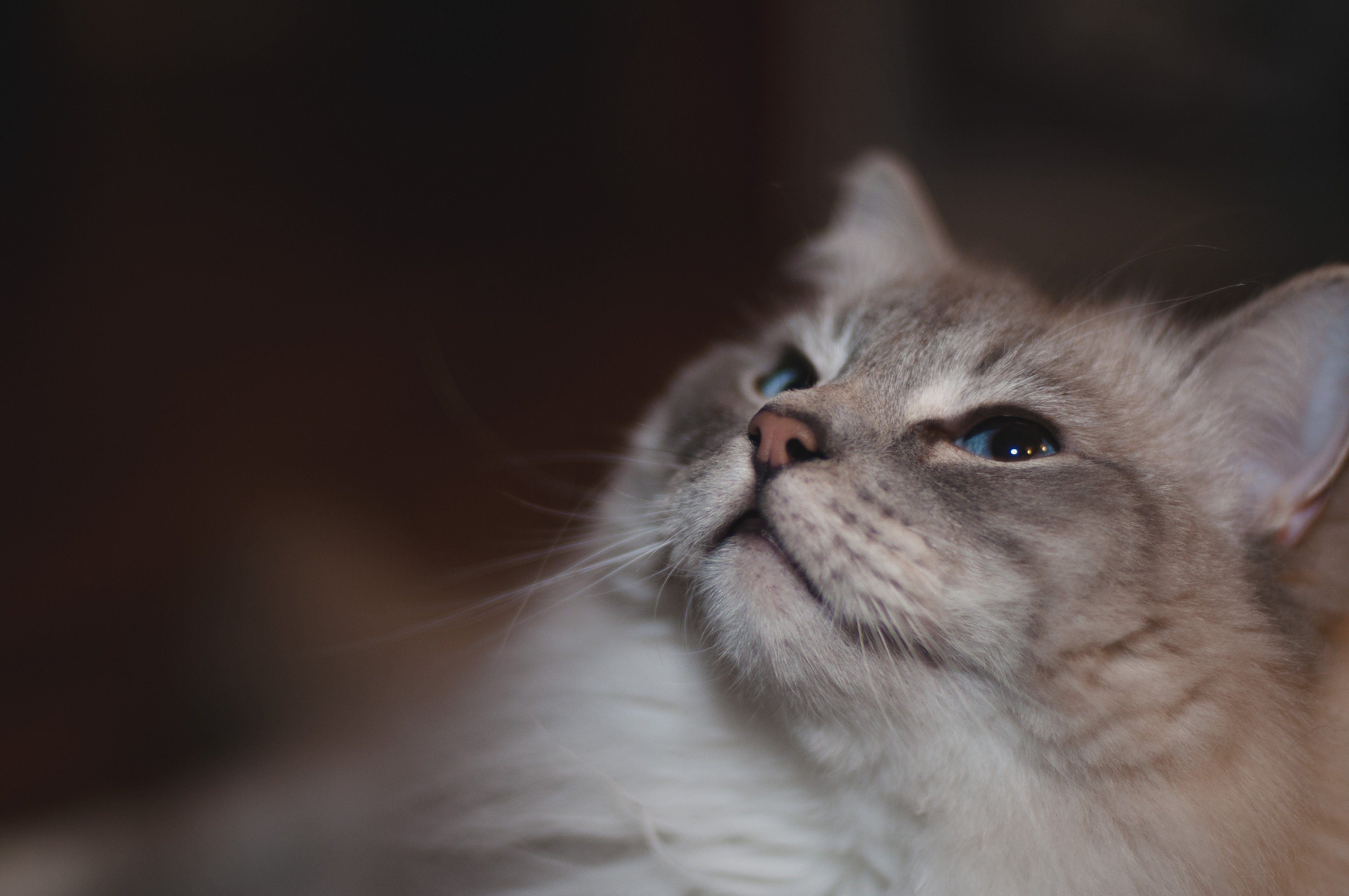
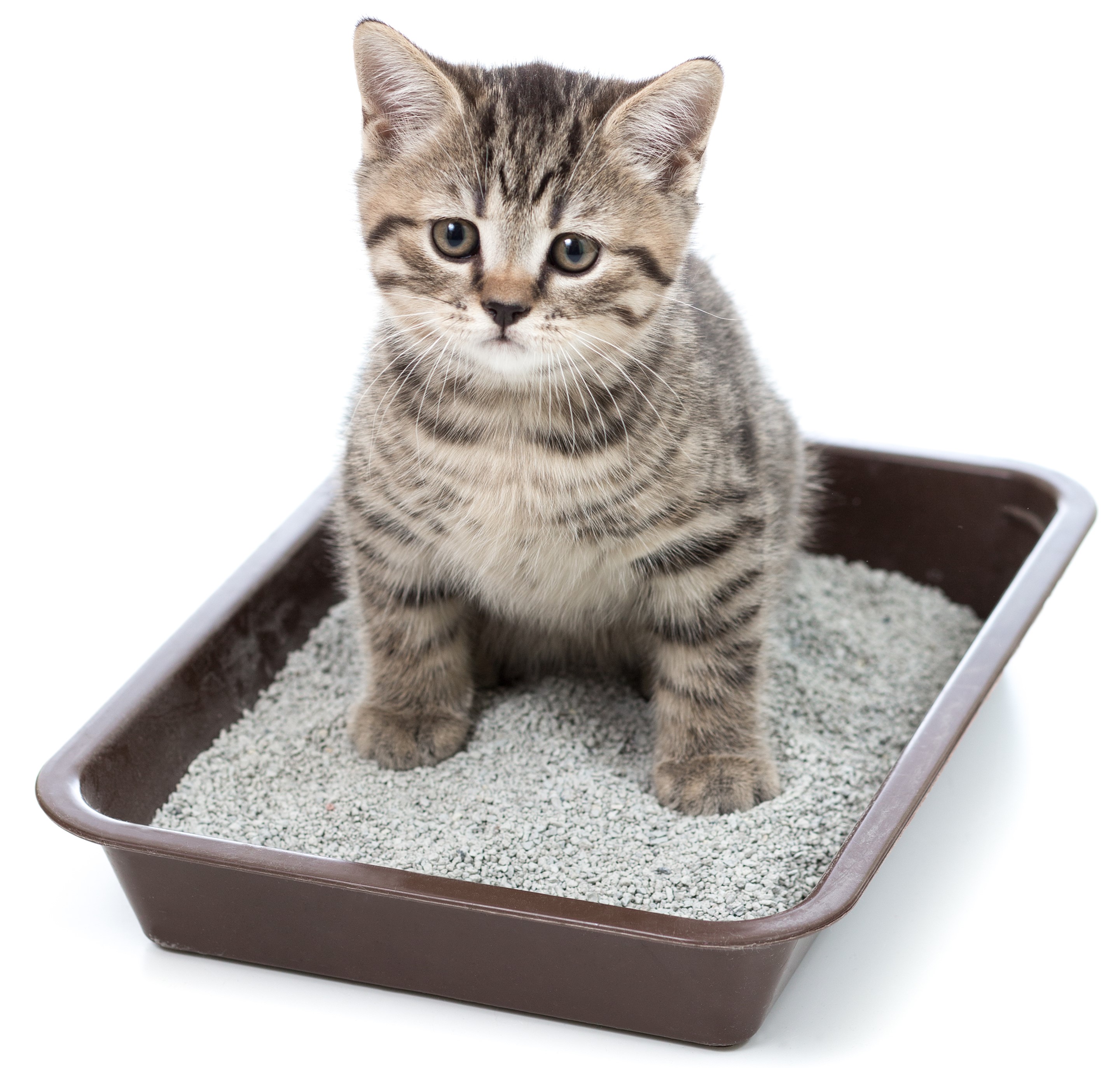 In a glass jar, add 1 to 3 drops of
In a glass jar, add 1 to 3 drops of 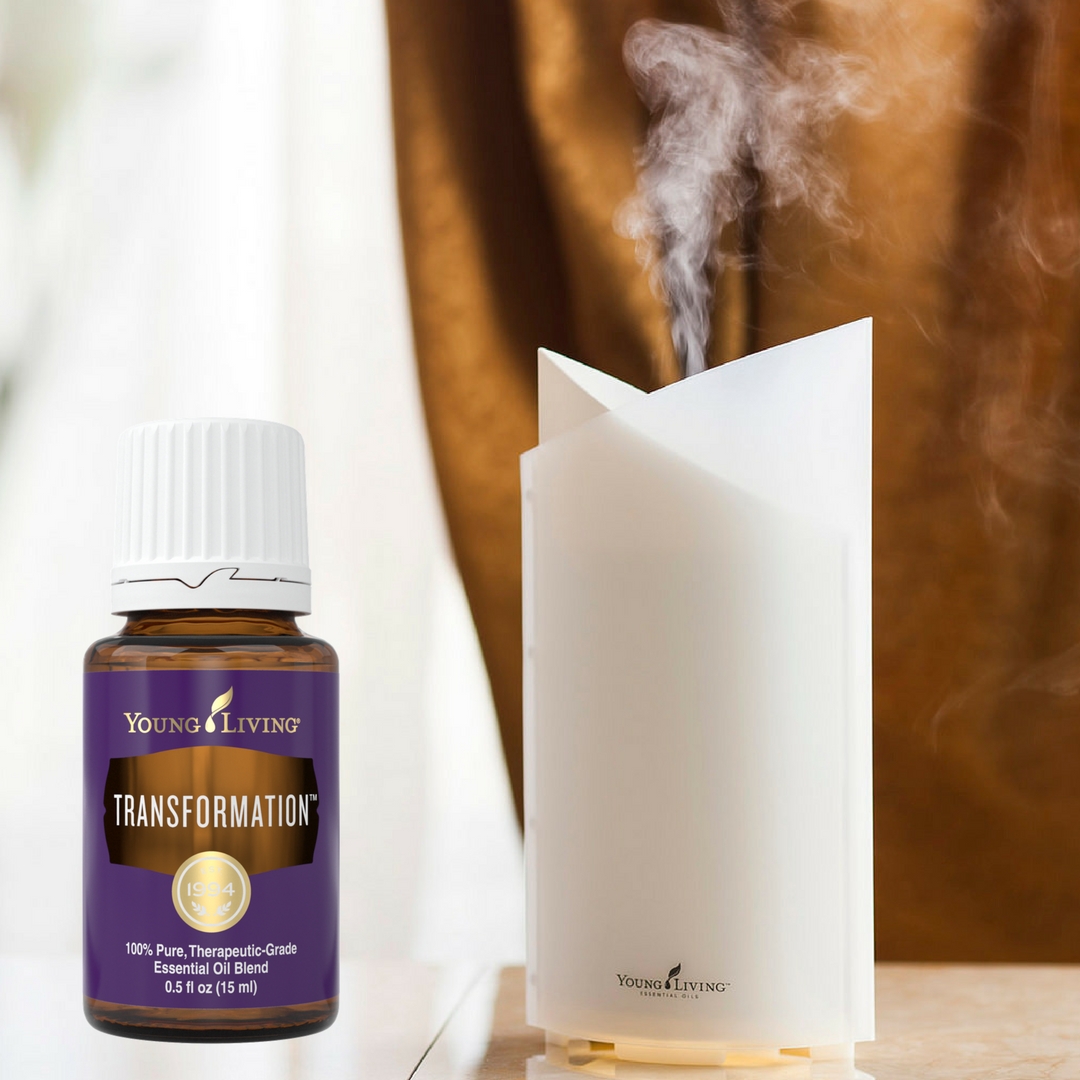 One of my favourite
One of my favourite